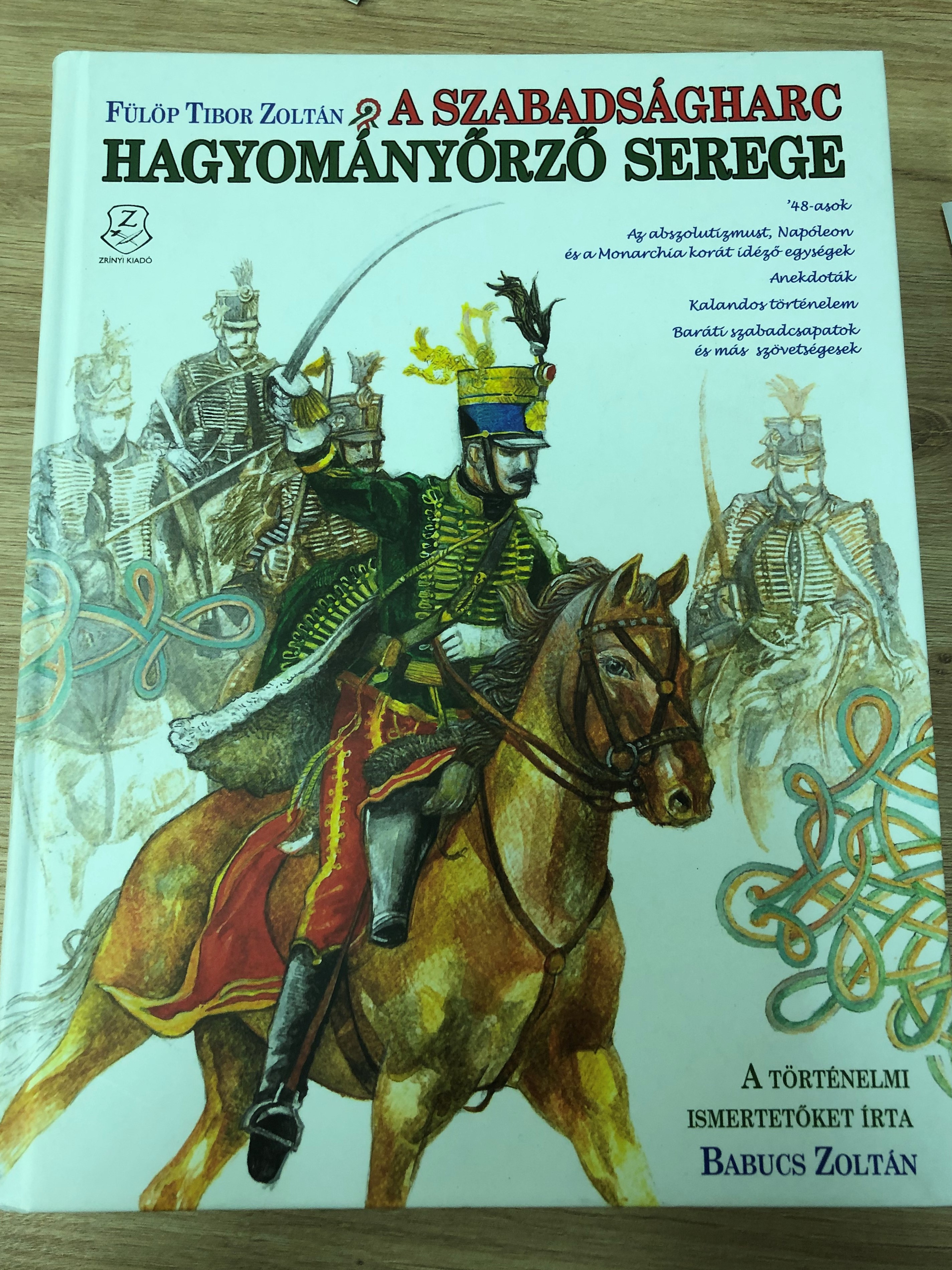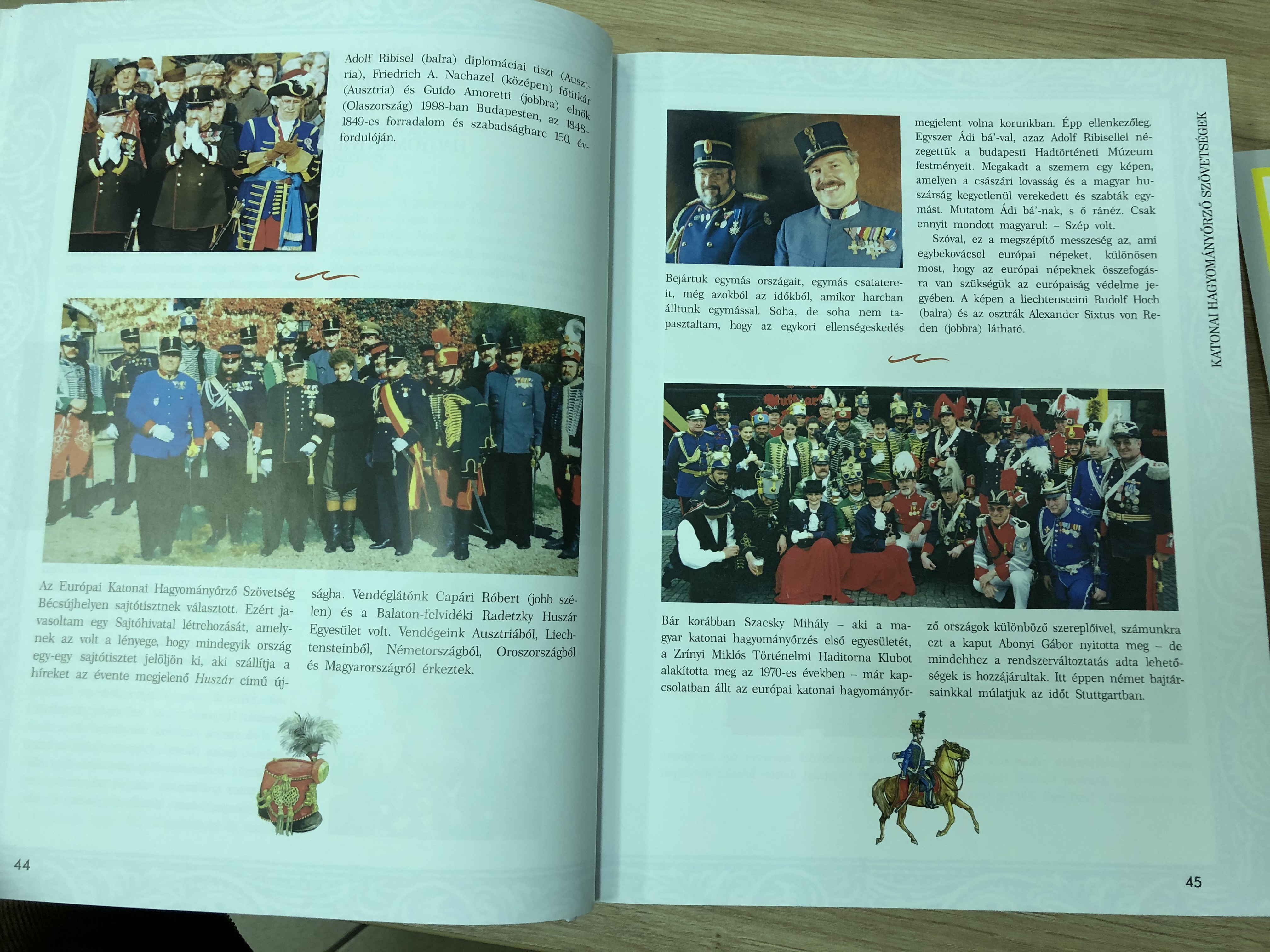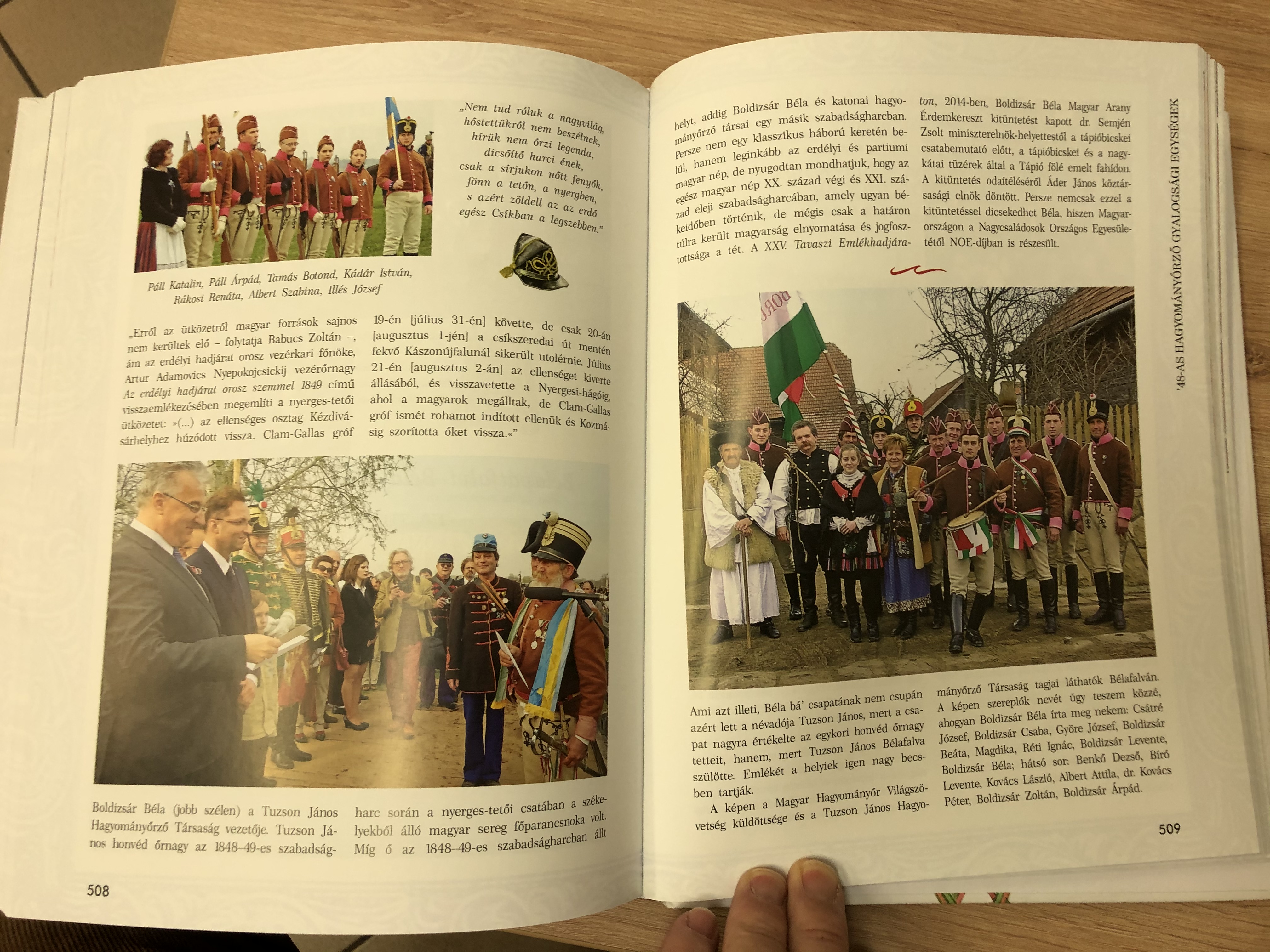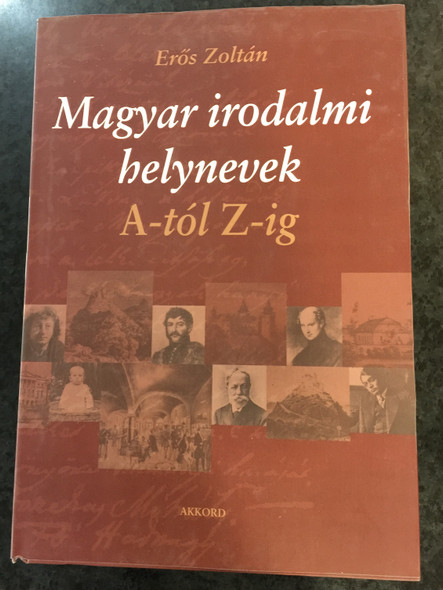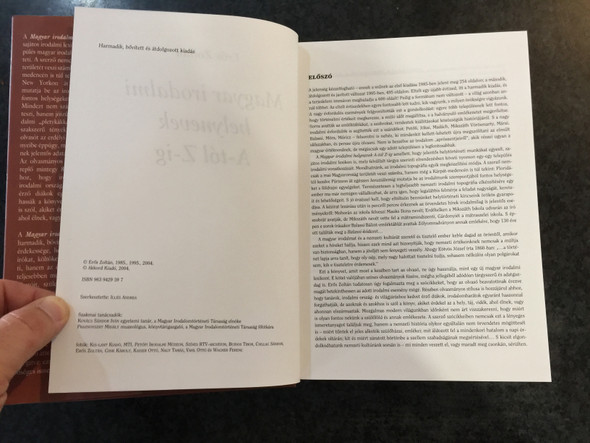Description
A szabadságharc hagyományörző serege by Fülöp Tibor Zoltán / HM Zrínyi kiadó 2018 / Történelmi ismertetők - Babucs Zoltán / The Hungarian freedom fighters traditional army from the 1848 revolution / Hardcover
Hardcover 2018
PAGES: 596
ISBN: 9789633275719 / 978-9633275719
ISBN-10: 9633275717
PUBLISHER: HM Zrínyi kiadó
LANGUAGE: Hungarian / Magyar
Hungarian Summary:
Megjelent a „Huszárkalandok” szerzőpárosának újabb műve, (2018), „A Szabadságharc Hagyományőrző Serege”.
'48-asok - Az abszolutizmust, Napóleon és a Monarchia korát idéző egységek - Anekdoták - Kalandos történelem - Baráti szabadcsapatok - és más szövetségesek képezik a kötet tartalmát.
A történelmi ismertetőket írta: Babucs Zoltán.
„Ki vérrel derített hajnalt hazájára,
Feljegyzi a nemzet aranytáblájára,
S ki az igazságért harcol mindhalálig -
Holta után tüstént egy csillaggá válik.”
(Részlet Sárosi Gyula: „A Huszár” című verséből)
A magyar huszárság több mint négy évszázados fennállása során teljesítette a Teremtő által reá kiszabott küldetését. Végigharcolta Európát, mintául szolgált más nemzetek lovasságának, hadseregének, követőkre akadt a világ minden táján. Küzdött, harcolt és verekedett a magyar szabadságért, megkérdőjelezhetetlen nemzeti jelképpé vált.
Bár a huszárság felett eljárt az idő, mégsem beszélhetünk e csapatnem haláláról, hiszen hagyományőrző formában tovább él.
Ez a könyv az elmúlt több mint harminc év magyar huszár-hagyományőrzőit, magyar gyalogsági és tüzérségi hagyományőrzőit, kisebb részben a magyar katonai hagyományőrzést segítő nem katonai hagyományőrzőket kívánja bemutatni, a könyv adta keretek lehetőségei között - arccal, névvel és képpel.
Fülöp Tibor Zoltán szerző Babucs Zoltán hadtörténésszel és Sebestyén János képzőművésszel együtt ajánlja ezt az igen esztétikus és tartalmas könyvet mindazoknak, „akik érdeklődnek a magyar katonai hagyományőrzés iránt, valamint akik szeretnének tenni valamit - a maguk lehetőségei szerint - a hagyományainkért, műveltségünkért, honunkért és az európai civilizáció fennmaradásáért...”
„A Legtöbb, Amit Gyermekeinknek Adhatunk: Gyökerek és Szárnyak.”
(Johann Wolfgang von Goethe)
Historical Background
The Hungarian Civic Revolution and War of Independence of 1848-1849 (Hungarian: 1848–49-es polgári forradalom és szabadságharc, "1848–49 Revolution and War of independence") was one of many European Revolutions of 1848 and closely linked to other revolutions of 1848 in the Habsburg areas. It is one of the most determinative events in Hungary's modern history, forming a cornerstones of modern Hungarian national identity.
After France (1791) and Belgium (1831), Hungary became the third country of Continental Europe which held democratic elections (June, 1848), and set up a representative type of parliament which replaced the feudal estates based parliamentary system.
The crucial turning point of the events were the April laws which King Ferdinand I ratified and the new young Austrian monarch Franz Joseph I arbitrarily revoked without any legal competence. This unconstitutional act irreversibly escalated the conflict between the Hungarian parliament and Franz Joseph. The new constrained Stadion Constitution of Austria, the revocation of the April laws, and the Austrian military campaign against the Kingdom of Hungary resulted in the fall of the pacifist Batthyány government (who sought agreement with the court) and led to the sudden emergence of Lajos Kossuth's followers in the parliament, who demanded the full independence of Hungary. The Austrian military intervention in the Kingdom of Hungary resulted in strong anti-Habsburg sentiment among Hungarians, thus the events in Hungary grew into a war for total independence from the Habsburg dynasty.
After a series of serious Austrian defeats in 1849, the Austrian Empire came close to the brink of collapse. The young emperor Franz Joseph I had to call for Russian help in the name of the Holy Alliance. Tsar Nicholas I answered, and sent a 200,000 strong army with 80,000 auxiliary forces. Finally, the joint army of Russian and Austrian forces defeated the Hungarian forces. After the restoration of Habsburg power, Hungary was placed under brutal martial law.
The anniversary of the Revolution's outbreak, 15 March, is one of Hungary's three national holidays.
































































